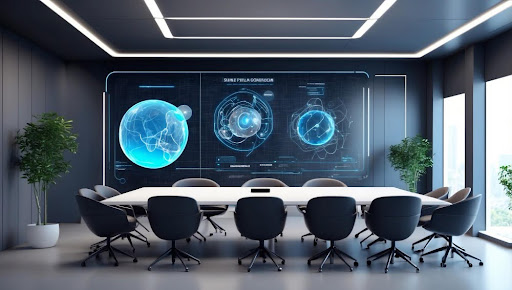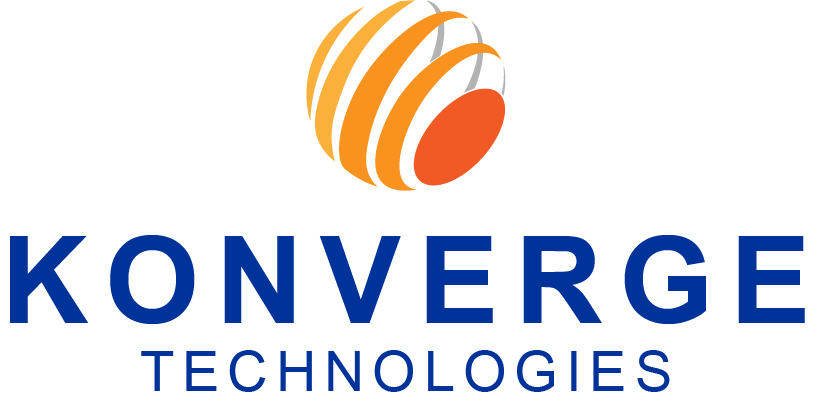
How AI is Transforming Modern Meeting Rooms

Successful collaboration depends on the quality and productivity of meeting rooms, particularly in the current hybrid workplace. Conventional meeting rooms are transforming into smart, AI-driven spaces that boost productivity, inclusiveness, and user experience. By incorporating the latest technologies, companies can design meeting rooms that are responsive to the needs of contemporary teams. Meeting room solutions today include intelligent video conferencing, automatic controls, and integration with collaboration platforms, all enabled by artificial intelligence.
Smart Video Conferencing
AI improves video conferencing by streamlining tasks that were earlier performed manually. Sophisticated camera systems implement AI to frame individual participants, so distant participants can clearly see every speaker. This smart framing reduces distractions and ensures maximum engagement, making the experience more inclusive for all participants. Moreover, AI-driven noise cancellation and echo reduction technologies enhance the clarity of the audio, further enhancing virtual meeting quality.
Real-Time Transcription and Translation
Transcription services powered by AI offer real-time captions for meetings, thus making the conversation more accessible for hearing-impaired participants or individuals who communicate in other languages. Such services can also translate spoken language into other languages, overcoming communication barriers in international teams. Through the provision of accurate and timely transcriptions, AI ensures that every participant can keep pace with the conversation and effectively contribute.
Automated Meeting Management
AI-based assistants are also capable of automating many parts of meeting management, including scheduling, building agendas, and follow-up work. AI assistants will be able to find the best meeting times by analyzing calendar information, reminding individuals about meetings, and even creating meeting summaries. By taking care of administrative work, AI enables individuals to spend more time on the content and results of the meetings, making overall productivity better.
Improved Collaboration Tools
AI incorporation in meeting room systems supports smooth collaboration among team members. Capabilities such as real-time document editing, virtual whiteboards, and shared workspace allow participants to collaborate well, irrespective of their location. AI can also propose appropriate documents or resources to be used in discussions and provide context-based information for supporting decision-making processes.
Energy Efficiency and Smart Room Controls
AI enhances energy efficiency through room condition optimization depending on usage and occupancy. Intelligent lighting and climate control systems automatically adjust to maintain comfort at the lowest possible energy cost. For example, AI can sense an empty room and dim the lights or lower the temperature setting, resulting in cost savings and a greener work environment.
Security and Privacy Enhancements
AI improves security in conference rooms through access monitoring and detecting suspicious activity. Biometric and facial recognition technologies can regulate entry, allowing only permitted participants to engage in confidential conversations. AI can also inspect network traffic for security vulnerabilities, giving real-time notification and making it possible to respond in a timely manner to prevent confidential information from being compromised.
Scalability and Customization
AI-based meeting room solutions are flexible and adaptable to the specific requirements of various organizations. From a small huddle room to a big boardroom, AI can be configured to suit any room size or setup. Businesses can customize features like interface layouts, languages, and integration with current tools to create a personalized and effective meeting experience.
AI-Powered Analytics and Insights
AI not only improves meeting productivity but also provides actionable insights that enable organizations to optimize collaboration. Some of the key advantages include:
- Usage Analytics: Monitor room utilization, usage habits, and busiest times to maximize space use and minimize unused areas.
- Monitoring of engagement: Measure participant engagement, speaking durations, and concentration levels to make meetings more effective and enable collaboration among teams.
- Content Insights: AI processes meeting subjects and common resources to offer trends and repeat discussion points for planning.
- Scheduling Optimization: Determine patterns in meeting duration and frequency to optimize calendar management and decrease scheduling conflicts.
- Resource Recommendations: AI offers relevant papers, prior meeting notes, or content to assist with real-time decision-making.
- Continuous Improvement: All these learnings together can be used by organizations to streamline their meeting room solutions, enhance productivity, and optimize ROI on collaboration tools.
Conclusion
The inclusion of AI in meeting room solutions is transforming the way organizations hold meetings, making them efficient, accessible, and secure. Through the implementation of AI technologies, organizations can design smart meeting spaces that drive collaboration and productivity.
Organizations such as Konverge Technologies Pvt Ltd are leading the wave of change, providing end-to-end meeting room solutions that leverage AI-powered features to cater to the changing needs of contemporary workplaces.



